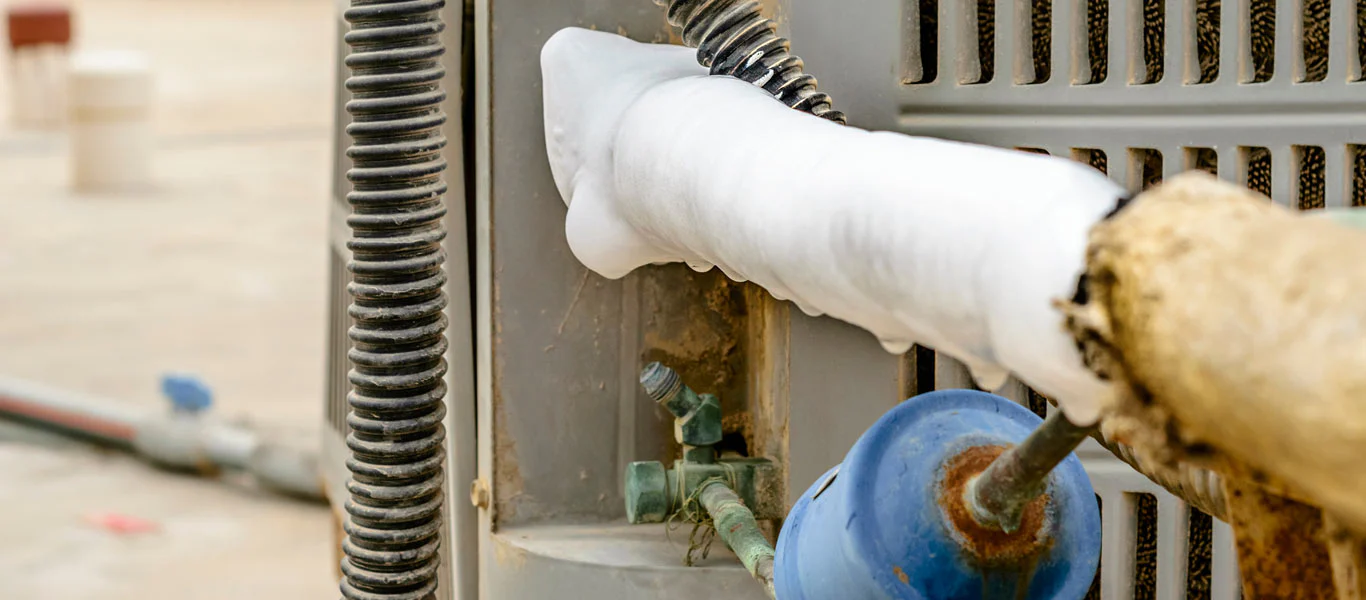Historical Use of Asbestos in Naval Construction
For decades, asbestos was a go-to material in building ships and shore facilities. Its fire-resistant and insulating properties made it seem like a perfect fit for military construction. Think about it: in a place where fire safety is a big deal, asbestos offered a cheap and effective solution. It was used in everything from insulation around pipes and boilers to ceiling tiles and even some types of paint and flooring. This widespread use meant that many naval bases and the barracks built on them likely incorporated asbestos-containing materials (ACMs) during their construction or renovation phases. The Navy, like other branches of the military, relied heavily on these materials to meet building codes and safety standards of the time. The sheer volume of asbestos used means that its presence is still a concern in many older structures.
Why Barracks Were Particularly Vulnerable
Navy barracks, especially those built before the 1980s, were often constructed quickly and in large quantities to house personnel. This rapid construction, coupled with the extensive use of asbestos in building materials, created a perfect storm for potential exposure. Barracks are also places where daily life happens – people are moving in and out, cleaning, and making repairs. These activities, even minor ones, can disturb asbestos materials. Think about routine maintenance, renovations, or even just the wear and tear of many people living in close quarters. Any disruption to these materials, no matter how small, could release asbestos fibers into the air. Furthermore, the enclosed living spaces meant that any airborne fibers could concentrate, increasing the risk for those living and working there.
The Silent Threat: How Asbestos Fibers Spread
Asbestos fibers are incredibly small and lightweight. When materials containing asbestos are disturbed – whether through demolition, renovation, or even just age and decay – these microscopic fibers can become airborne. They don’t settle quickly and can remain suspended in the air for a long time. Once airborne, these fibers can be inhaled or ingested. Because they are so small, they can penetrate deep into the lungs. The problem is that asbestos is often hidden within building materials, so its presence might not be obvious until it’s disturbed. This makes it a silent threat; people might be exposed without even knowing it. The fibers can travel through ventilation systems, spreading throughout a building and contaminating different areas. The danger lies in the fact that you can’t see, smell, or taste asbestos fibers.
Health Risks Associated with Asbestos Exposure
Exposure to asbestos fibers, particularly in environments like navy barracks where it was once widely used, can lead to serious long-term health problems. These conditions often take many years, even decades, to develop after the initial exposure. The microscopic asbestos fibers, once inhaled, can become lodged in the lungs and other tissues, causing inflammation and damage that progresses over time. Understanding these potential health consequences is vital for veterans who may have served in older naval facilities.
Asbestosis: Scarring of the Lungs
Asbestosis is a chronic lung disease caused by inhaling asbestos fibers. These fibers irritate and scar the lung tissue, making it difficult for the lungs to function properly. Symptoms can include:
- Shortness of breath, especially during physical activity
- A dry cough that doesn’t go away
- Chest pain or tightness
- Crackling sounds when breathing
Over time, asbestosis can worsen, leading to severe respiratory impairment and increasing the risk of other lung conditions.
Mesothelioma: A Rare and Aggressive Cancer
Mesothelioma is a particularly devastating cancer that affects the lining of the lungs (pleura), abdomen (peritoneum), or heart (pericardium). It is almost exclusively linked to asbestos exposure. The latency period for mesothelioma can be very long, often 30 to 50 years or more after exposure. Treatment options are often limited, and the prognosis can be poor.
Lung Cancer and Other Related Illnesses
Individuals exposed to asbestos also face a significantly increased risk of developing lung cancer. This risk is even higher for those who also smoke. Asbestos exposure has also been linked to other cancers, such as those of the larynx and ovaries, though the evidence for these is not as strong as for lung cancer and mesothelioma. Furthermore, asbestos exposure can contribute to other pleural abnormalities, such as pleural plaques and thickening, which may not be cancerous but can still cause discomfort and breathing difficulties.
Identifying Potential Exposure Sites
Common Building Materials Containing Asbestos
Many materials used in the construction and maintenance of Navy barracks between the 1940s and the 1980s contained asbestos. These substances were favored for their fire resistance and insulating properties. Recognizing these materials is the first step in identifying potential exposure risks.
- Insulation: Pipe insulation, boiler insulation, and insulation around electrical systems often used asbestos.
- Flooring: Vinyl floor tiles and the adhesive used to secure them could contain asbestos.
- Ceilings: Acoustic ceiling tiles and spray-on ceiling materials were common sources.
- Walls: Some textured paints and joint compounds used for drywall installation contained asbestos.
- Roofing and Siding: Asbestos cement sheets were frequently used for roofing and exterior siding.
Areas Within Barracks Prone to Disturbance
Certain areas within barracks were more likely to have asbestos-containing materials disturbed, leading to fiber release. These disturbances could happen during routine maintenance, renovations, or even just through normal wear and tear over time.
- Boiler Rooms and Mechanical Spaces: These areas housed a lot of insulated pipes and equipment, which were frequently worked on.
- Maintenance Workshops: Repair activities could stir up dust from materials being worked on or removed.
- Living Quarters: Over decades, wear and tear on flooring, walls, and ceilings could release fibers.
- Common Areas: Places like mess halls or recreation rooms, with heavy foot traffic, could see material degradation.
Signs of Damaged or Deteriorating Asbestos Materials
Visible damage to materials is a key indicator of potential asbestos release. When asbestos-containing materials are intact, they generally pose less risk. However, when they become damaged, fibers can become airborne and inhaled.
Look out for:
- Crumbles: Materials that are breaking apart or turning to powder.
- Tears or Rips: Damaged insulation or flooring materials.
- Water Damage: Stains or warping on ceiling tiles or walls, which can weaken asbestos-containing materials.
- Dust: Excessive dust in areas where these materials were used, especially after maintenance or cleaning activities.
Long Latency Periods and Delayed Symptoms
The Decades-Long Incubation of Asbestos Diseases
One of the most insidious aspects of asbestos-related illnesses is the significant time lag between exposure and the onset of symptoms. It’s not uncommon for diseases like asbestosis, mesothelioma, and lung cancer to take anywhere from 10 to 40 years, or even longer, to develop after a person has stopped being exposed to asbestos fibers. This extended incubation period means that individuals who served in Navy barracks decades ago might only now be experiencing the health consequences of that past exposure. The asbestos fibers, once inhaled, settle deep within the lungs and can remain dormant for many years, slowly causing damage and inflammation that eventually leads to serious disease. This long delay makes it challenging to connect current health problems with past military service.
Recognizing Subtle Early Warning Signs
Because the symptoms of asbestos-related diseases often mimic those of more common ailments, they can be easily overlooked or misdiagnosed in their early stages. It’s important for former service members to be aware of potential warning signs, even if they seem minor. These can include:
- Persistent dry cough
- Shortness of breath, especially with physical activity
- Chest pain or tightness
- Unexplained fatigue
- Finger clubbing (widening and thickening of fingertips)
These symptoms might initially be attributed to aging, smoking, or other respiratory conditions. However, if they persist or worsen, especially in someone with a history of potential asbestos exposure, it warrants further medical investigation.
Importance of Medical Surveillance for Veterans
Given the long latency period and the subtle nature of early symptoms, regular medical check-ups are highly recommended for any veteran who may have been exposed to asbestos during their service, particularly in barracks environments. This medical surveillance allows healthcare providers to monitor for any changes in lung function or the development of asbestos-related conditions. Early detection is key to managing these diseases more effectively and can significantly improve treatment outcomes. Veterans should proactively discuss their service history and any concerns about asbestos exposure with their doctors. Keeping detailed records of service, including duty stations and dates, can also be helpful for future medical evaluations and potential claims.
Navigating Claims and Compensation
For veterans who developed asbestos-related illnesses due to their service, understanding how to pursue claims and compensation is a significant step. The process can seem complicated, but breaking it down into manageable parts can help.
Documenting Your Service and Exposure
Gathering solid evidence is the first step in any claim. This involves collecting records that show your military service and any potential exposure to asbestos.
- Service Records: Obtain your official military personnel file (OMPF). This document details your duty stations, job roles, and deployment history, which can help establish where and when exposure might have occurred.
- Medical Records: Collect all medical records related to your diagnosis. This includes records from military doctors as well as civilian physicians you may have seen since leaving service.
- Witness Statements: If possible, gather statements from fellow service members who can corroborate your exposure or recall asbestos-containing materials in the barracks or work areas.
- Barracks Information: Try to find any available information about the construction and maintenance of the barracks where you lived. Older buildings are more likely to have contained asbestos.
Working with the Department of Veterans Affairs
The Department of Veterans Affairs (VA) provides benefits for veterans who have service-connected disabilities, including those caused by asbestos exposure. Filing a claim with the VA is a formal process.
- File a Claim: Submit VA Form 21-526EZ, Application for Disability Compensation. You will need to provide details about your diagnosis and how you believe it relates to your military service.
- VA Examination: The VA may schedule a Compensation and Pension (C&P) exam. A medical professional will assess your condition and its connection to your service.
- Decision and Appeals: The VA will review your claim and evidence and make a decision. If the claim is denied or the compensation is not satisfactory, there is an appeals process.
The VA recognizes several asbestos-related diseases as service-connected conditions. This means that if you served and were exposed to asbestos, and subsequently developed one of these conditions, you may be eligible for benefits.
Seeking Legal Counsel for Asbestos-Related Claims
While the VA process is available, some veterans find it beneficial to seek assistance from legal professionals, especially when dealing with complex cases or if they are considering claims against third parties. Attorneys specializing in veterans’ disability claims or asbestos litigation can offer guidance.
- They can help ensure all necessary documentation is submitted correctly and on time.
- They may assist in identifying potential third-party liability if asbestos products were manufactured by private companies.
- Legal counsel can provide support throughout the appeals process if the initial VA claim is unsuccessful.
It is important to find legal representation that understands the specific challenges faced by veterans with asbestos-related illnesses.
Preventative Measures and Future Safety
Ongoing Asbestos Abatement in Military Housing
While much of the asbestos used in older Navy barracks has been identified, the work to remove it isn’t entirely finished. Military branches are still working to identify and safely remove asbestos-containing materials from buildings, including housing. This process, known as abatement, involves specialized teams who follow strict protocols to prevent fiber release. The goal is to make current and future military housing safe from this hazard. This is a long-term project, as identifying all potential sources can be complex, especially in older structures that have undergone various renovations over the years. Regular inspections are part of this ongoing effort to catch any deteriorating materials before they become a problem.
Awareness and Education for Service Members
Knowing the risks is the first step. Service members, especially those stationed in older facilities, should be aware of the potential for asbestos exposure. This includes understanding what asbestos looks like, where it might be found, and what to do if they suspect a material is damaged. Education programs are key here. They help personnel recognize potential issues and report them properly. This isn’t about causing alarm, but about informed caution. If you’re living or working in a building that might contain asbestos, knowing the signs of damage is important.
Protecting Future Generations from Exposure
The lessons learned from past exposures are driving changes in how military facilities are built and maintained. New construction uses asbestos-free materials. For existing structures, the focus is on containment and removal. This multi-pronged approach aims to prevent new cases of asbestos-related illness. It’s about creating a safer environment for everyone who serves and for their families. The continued vigilance in identifying and managing asbestos ensures that the mistakes of the past are not repeated, safeguarding the health of those who follow.
Links to Review
• Veterans Guide to Mesothelioma





